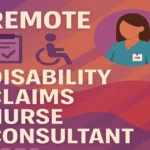Description
Frequently Asked Questions (FAQs)
1. What types of patients will I typically support as a Telehealth Nurse in a hospital setting?
As a Telehealth Nurse supporting hospitals, you'll interact with diverse patient populations, including individuals in post-treatment recovery after discharge, those with chronic conditions, and patients in need of emergency triage support. You'll provide care across specialties like cardiology, pulmonology, and internal medicine, ensuring seamless continuity of care remotely.
2. How do telehealth nurses manage clinical judgment and patient safety without being physically present?
Telehealth nurses rely on remote patient monitoring systems, symptom assessments, and digital health records to make informed clinical decisions. With protocols in place for escalation and access to real-time vitals, they collaborate with on-site hospital staff to address potential complications and ensure patient safety.
3. What are the biggest challenges unique to working as a nurse in telehealth, and how are they addressed?
Some challenges include limited physical interaction, technology reliability, and interpreting symptoms without in-person exams. These are addressed through robust telemedicine platforms, detailed patient questionnaires, training in virtual communication, and constant coordination with in-hospital teams to close care gaps.
4. Are there opportunities for growth for telehealth nurses in hospital-based virtual care models?
Yes, telehealth nurses can advance into roles such as Telehealth Nurse Educator, Clinical Informatics Specialist, or Telehealth Program Manager. As digital care expands, hospitals are increasingly developing career ladders for remote clinical professionals involved in virtual care delivery and program design.
5. How do telehealth nurses stay current with evolving technology and hospital protocols?
Ongoing training is a key part of the role. Nurses participate in webinars, hospital-provided continuing education, and vendor-led training on new telemedicine tools. Regular updates on compliance, technology usage, and patient safety protocols are integrated into the remote care framework to keep skills current and up-to-date.




